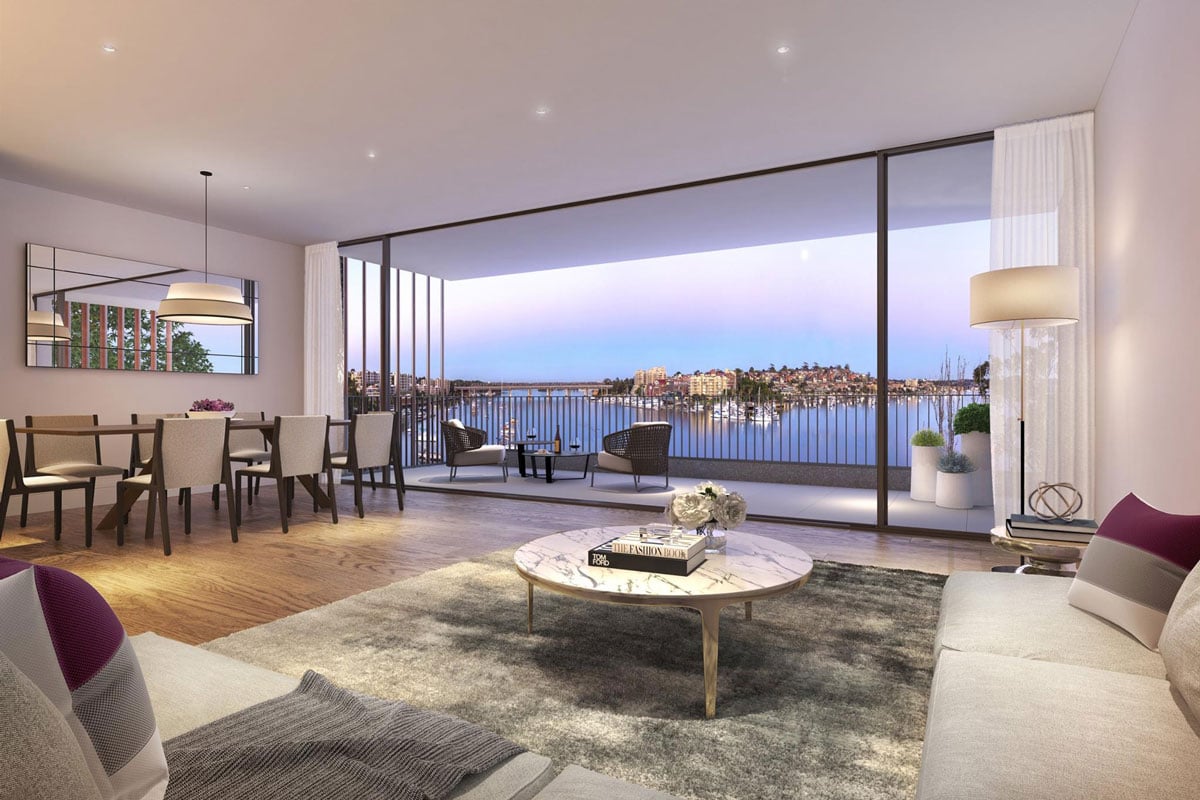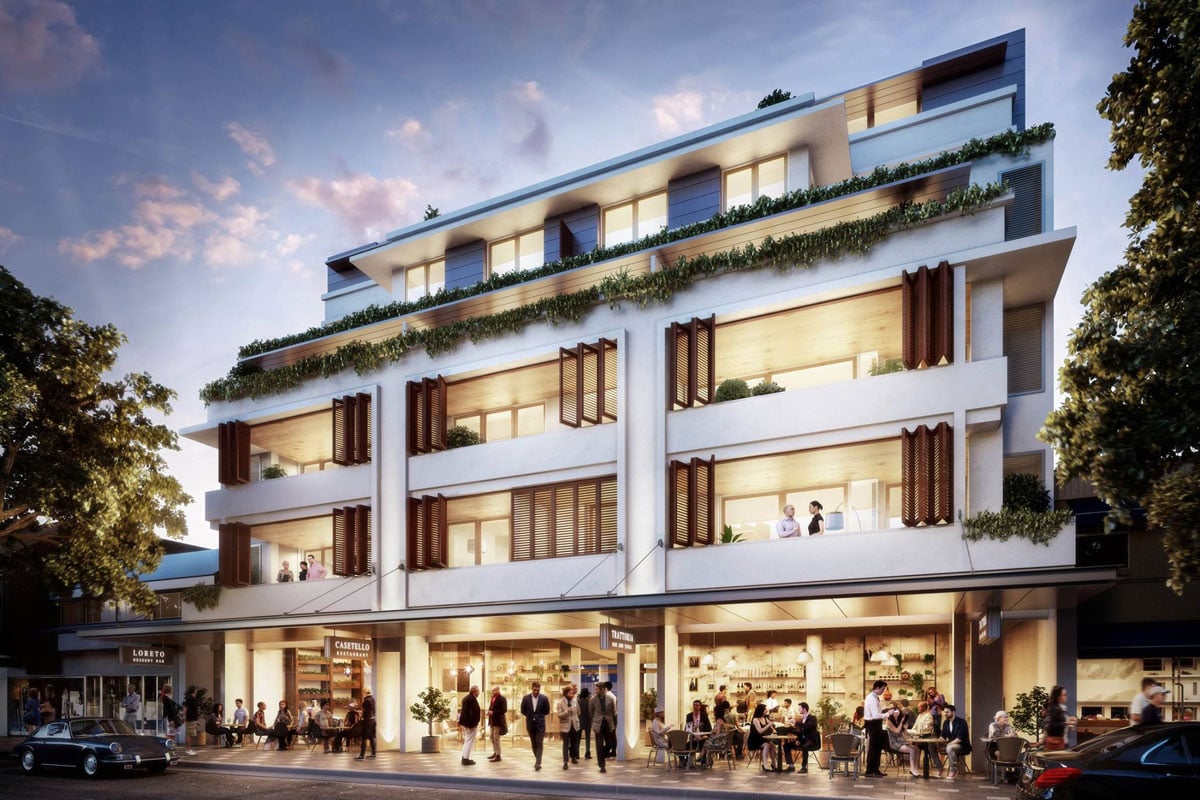Expert advice you need to know before investing millions in a luxury apartment
The pandemic may have put a halt on major industries around the world, but it would appear that the luxury property market is still finding creative ways to trade hands in some major cities.
According to the latest report by Domain, it was expected that the economic impact of the pandemic would drive down the prices of premium luxury properties, but instead it’s seen a significant portion of the prestige market moving towards off-market trading to target select buyers.
With property trading still forging ahead, it’s never been more important to realise exactly what your millions are paying for when searching for the perfect luxury apartment. To help assist with your journey, we enlisted the help of Fabrizio Perilli, the CEO of premium property developer TOGA Group, to answer some of the most asked questions in the housing market for shiny off-the-plan developments.
Research the reputation of your luxury property developers

It might seem like common sense but it’s easy to overlook a developer’s reputation when you’ve seemingly fallen in love with your ideal designer penthouse or a chic waterfront apartment.
"A property buyer must do their due diligence on the developer, builder and architect when considering the purchase of a property," Perilli explains.
In the past five years, there’s been a number of Australian cases where buyers weren’t being delivered what they expected or were promised at the time of purchase. According to Perilli, this extends to issues of design and construction quality where the developer or builder has simply refused to take ownership and rectify the identified problems.
It’s therefore crucial for buyers to take into account not just the current reputation but also the builder’s extended experience in delivering high-quality products in the property industry.
"It also helps if the developer is an owner and operator of property assets, as it helps them to better understand the potential issues that can arise if buildings are not well designed and constructed," Perilli adds.
Research the team building the property

Third-party builders are often contracted by a developer, and it is through this relationship that there could be potential misalignments of economic interests when delivering on a project.
Despite the contractual arrangement, this issue generally gets highlighted at the end of a project when identified defects need to be rectified and neither party wants to take responsibility.
"In this scenario it is the purchaser that suffers whilst they wait for the developer and builder to resolve their contractual issues," Perilli says.
One solution is to look at vertically integrated developer-builders who have a long history of producing quality projects and are best placed to deliver the desired outcomes for residential purchasers.
Quality developer-builder firms often possess a better alignment of interest as they want to maintain and grow their reputation and therefore will be more likely to resolve identified issues in a timely manner.
Additionally, there are some tips for those looking at premium properties from developers that aren’t vertically integrated. A recent guide from the Australian Financial Review suggests that:
- Buyers should do the basic Google search to scope out a developer’s work quality and if they’ve been involved in any questionable practices.
- Most builders will showcase their projects online and luxury properties will usually have a dedicated YouTube channel with regular project updates from their architects, developers and builders.
- Pay attention to what other people are saying about a developer. Reputable developers often have positive reviews and industry awards while bad developers will have negative reviews and class actions attached to their name.
How reputable luxury property developers ensure quality
According to Perilli, it’s all about staying on top of the finer details when ensuring quality for potential buyers.
"This starts with the selection of appropriately skilled, experienced and capable architects, engineers, builders, subcontractors and suppliers that play a critical role in a development," he shares.
"Successful developments generally have a comprehensive and detailed design process where all the critical architectural, interior design and engineering decisions are made, followed by the engagement of a well-credentialled builder who has suitable residential expertise, experience and capability."
Perilli adds that during the construction phase, it is also important to have ongoing independent reviews of the work being progressed to ensure it is being carried out in accordance with design and quality standards.
"Our vertically integrated business model allows us to bring together all the key development, design and construction resources from commencement of a project to its completion," he says.
"This is advantageous because there is an equal and early focus on good-quality design as well as the right building details."
This approach of fully completing the design documentation prior to construction commencement, rather than relying on the builder and subcontractors to resolve design issues during the construction process, allows developers like Perilli’s to ensure value for money for buyers.
Common defects to look for in luxury property
The most common defects to look for in a luxury property are dependent on the quality and reputation of the developer and builder. Perilli notes that there are two specific areas to take note of.
In a good-quality luxury development, look at:
- Common, small defects inside the apartment including minor scratches to the joinery and paintwork, the tidiness of the seal between cupboards and the adjacent walls, and the seal between bathroom tiles and vanity units or bathtubs.
In a development of a lesser quality, look at:
- Water-related issues such as the effective flow of water within bathrooms and showers to the drainage points.
- In the hallways and common areas, buyers should check that the floor and wall finishes are durable and reflect the overall standards of the development.
- Outside the apartment, common defects are generally associated with incomplete landscaping and waterproofing issues to basement carparks.
In addition to this, potential buyers can access all the information up-front for off-the-plan apartments before the property is built. Perilli says this is the perfect time for people to ask questions about the layout and any bespoke changes desired.
As a minimum, buyers should visit the display suite for the project to see a real-life example of the apartment and get a feel for the quality of the finishes being used for the kitchen, bathroom and living space.
"Buying off the plan also has taxation and depreciation benefits, which as an investor can drive strong incentives," Perilli says. "Further, you won’t see any maintenance costs if it's a new property, with minor defects covered by the builder during the first two years post-completion of the development and up to six years in NSW for major defects."
Choosing the right suburb
One of the most critical factors of premium apartment hunting is the location itself, whether you’re an investor or owner occupier. Put simply, choosing a suburb with long-term investment potential can ensure your property will increase in value over time.
Perilli says that suburbs that have good access to transport, health, education and community infrastructure, and are in close proximity to commercial and retail centres, will always be popular with buyers. Running through this checklist will improve your opportunity to maximise your resale value and rental returns.
"As luxury buyers are often looking for unique experiences, choosing a suburb with a vibrant cultural scene, art and entertainment is also advantageous," Perilli adds.
"Buyers should also look out for suburbs that are earmarked for growth with planned infrastructure investment for the future and projects in the pipeline. Buying into a suburb ahead of the planned development can help achieve a higher return on your investment."
Determining good resale value
While the external factors mentioned often get all the credit for resale value, Perilli highlights the importance of paying attention to whether the property has been designed and built with materials that will stand the test of time.
"Classic and elegant design features and choice of fittings that never date are also ideal as they appeal to the wider community and therefore to an increased pool of buyers," he says.
"The up-front due diligence into the quality and reputation of the developer and builder pays off at the time of resale.
"Developments that provide exclusive elements will attract potential buyers who are looking for a unique experience that will set their home apart. This could include private gardens, separate studies, large kitchen and living areas, well-appointed and designed lobbies, wider car spaces and different forms of concierge services."
Other highly sought-after attractions that will help maximise your resale value include well-sized and functional rooms that have used the space effectively and efficiently. This also encompasses rooms with sufficient storage cupboards.
Luxury buying habits and trends
Taking a closer look at the buying habits and trends of luxury properties can only benefit potential owners down the line.
"Green space, health and wellbeing are key factors on the list for many luxury property buyers," Perilli says.
According to Knight Frank’s ‘The Wealth Report 2020’, 80 per cent of ultra-high-net-worth individuals are now dedicating more time and money into their wellbeing.
"We are seeing the growth of this trend in Australia, particularly following COVID-19, with more buyers of luxury properties wanting access to nature, wellness and community facilities in their developments," Perilli explains.
The main takeaway from this is for buyers to look for apartments that are close to parks and open, green spaces. Properties within the vicinity of gyms and fitness centres can also bring good investment returns down the track.
"Buyers can also look for design features in apartments such as windows that maximise natural light and airflow, indoor–outdoor living and natural materials," Perilli adds.
Ultimately, investing in luxury property requires careful reflection on how the suburb and the apartment will complement your lifestyle.